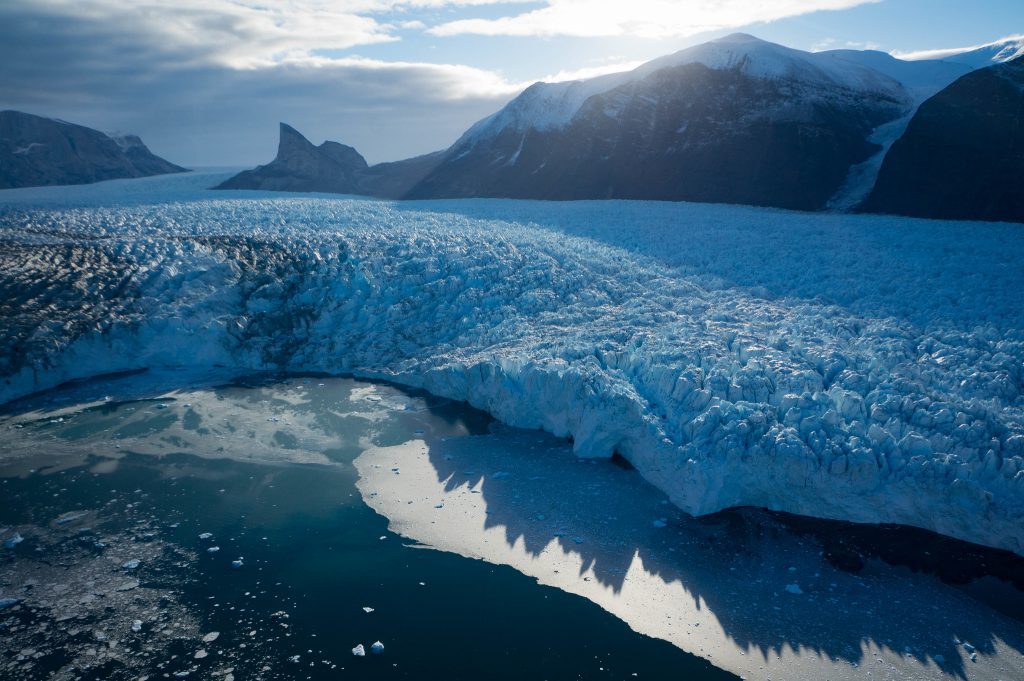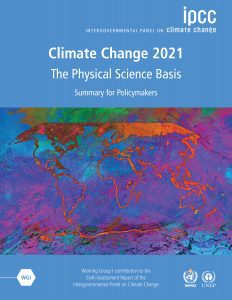Skift Take
Ignorance of the science is no longer an excuse — the IPCC report makes sure of that. If the tourism industry doesn't snap out of its inertia faster, its fate will be sealed sooner than any of us thought.
From droughts to floods and fires, the unprecedented size and frequency of natural disasters the world has experienced will continue, each more cataclysmic than the last. And they will affect industries essential to the travel industry, as well as entire sectors such as winter tourism. But there’s still time to prevent worse outcomes through deep and sustained reductions in greenhouse gas emissions by 2030.
That’s essentially the message of the United Nations Intergovernmental Panel on Climate Change (IPCC) in its sixth assessment report, Climate Change 2021: The Physical Science Basis, released on Monday. Relying on the most advanced climate science to date, which makes these findings the most accurate yet in our lifetime, the report confirms that human activity is to blame for the warming of atmosphere, ocean and land.
“Based on the data that is now available, it behooves every political figure and every decision maker, be it in a company, be it in city government or national government, to look at their climate actions, to look at their emissions reductions, to assess how they can be a contributor, and to ensure that business as usual does not become the continuation,” said Inger Anderson, under secretary general of the United Nations and executive director of the United Nations Environment Programme, at the IPCC virtual press conference.
The 4,000 page tome makes scant reference to the tourism industry per se, but it confirms that every inhabited region of the world will continue to experience further changes — faster sea level rises, increased droughts, more severe heatwaves, and complex monsoon patterns — that will impact health, agriculture, and infrastructure, among key sectors. All of these are, of course, essential to tourism operations.
In fact, perhaps no other industry has been as well positioned as tourism in witnessing and suffering the far-reaching impacts of climate change, the greatest threat to its raison d’etre: irreversible damage to natural resources, communities, cultural sights, wildlife and protected areas — all the elements that draw travelers.
Join Us at Skift Global Forum in NYC September 21-23
And yet, since pre-pandemic the global tourism industry has dragged its feet in confronting the climate crisis, or acknowledging its role in it.
Greenhouse gas emissions from tourism remain largely unmeasured and unreported at a destination level, nor are there global reporting standards for it, as confirmed by recent Skift research.
As of 2018, global tourism contributed approximately eight percent of global greenhouse gas emissions, higher than the construction industry, while transport-related emissions alone from international tourism are predicted to grow 25 percent by 2030, according to a 2019 report from the United Nations World Tourism Organization (UNWTO).
The tourism industry was advised then that it “has to determine its own high-ambition scenario, beyond transport; a scenario where tourism would transform towards low emission and highly efficient operations.”
“I think what’s actually quite shameful is the Paris Agreement was six years ago; carbon emissions have risen every year since and there’s record levels now and there’s still very little difference in action across tourism at all,” said Alex Narracott, co-founder of Tourism Declares a Climate Emergency, a volunteer organization born in 2020, pre-Covid, aiming to unify the industry in addressing climate action.
Nearly 300 signatories have since joined across all sectors of tourism, including the Visit Scotland, Visit Valencia, the Adventure Travel Trade Association (ATTA) and Red Rocks Rwanda.
The fact that the industry is still having conversations about the lack of agreed standards, reporting, and regulatory requirements is also pretty shameful, Narracott said. “I think the report only really serves as a wake up call, again. And hopefully what it does is it strengthens the likelihood of action being taken.”
Can Tourism Save Itself?
With the science now being more exact than it’s ever been, can the tourism industry afford to push the IPCC report aside and continue its inertia? If it’s not too late to rein in further global warming — will the industry get past its climate shame and collectively rise to the challenge to get on the path to net zero by 2030, and save itself?
“I think there is a lack of knowledge about what we can actually do, and then sort of almost an element of burying our heads in the sand because we’re tourism, we rely on flying,” said Narracott, adding that Tourism Declares was created to break down that barrier to start the conversation, and work across sectors to create climate action plans, while recognizing that no one has all the answers yet.
For Marco Lucero, co-founder of the organization’s South America chapter, Turismo Declara Estado de Emergencia Climatica, it’s about sharing that knowledge and collaborating.
“Information is being concentrated into some elements of the tourism system and I think we need to spread the information, create more relationships, and create more communities — in that way, Tourism Declares has been extremely positive.”
In July, the UNWTO launched a Global Survey of Climate Action in Tourism, in collaboration with the UN Framework Convention on Climate Change, ATTA and Tourism Declares a Climate Emergency, with specific versions for destinations, accommodations, tour operators, transportation providers, and associations.
It’s a first-time effort to map the state of climate action across the industry to determine where the gaps are and what support the industry needs going forward, as well as where the best practices lie.
Bringing an industry as diverse and fragmented as tourism around a common goal is not that straightforward, Narracott said, but there’s more momentum over the last 18 months than ever before in terms of commitments across all levels of tourism.
“It is definitely happening, not all of it is as public as it could be.”
Not Just Another Pledge
The survey results will be used by Tourism Declares to shape a series of blueprints for tour operators, hotels, and destinations, which will be public and available as a free resource in time for the United Nations Climate Change Conference (COP26) this Fall.
By then, the group also plans to publish the Glasgow Declaration — not just another pledge, Narracott said, but a commitment that each signatory will be making publicly to align with the Paris Agreement to cut down emissions by 50 percent by 2030, and commit to filing a climate action plan within a year’s time.
Narracot confirmed that household names in the travel industry will be signatories, to be revealed this Fall.
For now, it’s clear that tourism at a global level cannot afford to move at a snail’s pace on climate action, even amid a health crisis. Reduced emissions from the world pausing its travels in a pandemic year resulted in a mere seven percent reduction in emissions, according to the IPCC report.
This negligible amount points to the magnitude of the climate crisis and why as the pandemic continues to cripple tourism’s recovery, climate action needs the industry’s simultaneous attention.
If reaching net zero by 2030 is an imperative and the only way to avoid reaching higher 2°C global warming starting as early as mid-century, per the IPCC, then the travel industry’s stakeholders across all sectors must prioritize measuring, reducing, reporting and setting science-based targets. They must consult across borders and continents to find the climate solution that works for their destination and natural environment.
Momentum for Change Is Here
The momentum for change in the industry is here, even if it’s arrived late, and it’s also unavoidable: governments and tourism businesses will increasingly be held accountable for emissions and climate change actions.
The IPCC placed the onus primarily on the G-20 nations meeting this Fall, but in numerous regions of the world, tourism’s private sector yields considerable influence in shaping governmental and industry policies and is able to build a bridge faster to create and act on climate solutions.
The increased focus on sustainable and regenerative tourism, on destination management and responsible travel messaging in marketing is commendable and needed. But it cannot be confused with tackling the climate crisis. If the environmental crisis gets worse, all efforts in sustainable tourism management will become moot.
Inclusivity in the voices at the table crafting climate solutions for the tourism industry is also primordial, given that Indigenous populations, as well as women and people of color, are amongst the most impacted by the climate crisis.
In South America, there’s a big movement of companies jumping on climate action, Lucero said, particularly in the hospitality sector, but those voices may not have been heard or part of “the mainstream” up to this point.
The frightening scenarios in the IPCC’s sixth assessment report are no longer uncertain but scientific fact and should push the travel industry at large to determine how to decarbonize across its sectors, and commit to doing so aggressively and consistently by 2030.
In the meantime, climate disasters continue to unfold and affect travel’s reopening in the midst of Covid — heatwaves are gripping the Pacific Northwest, fires in Greece and Turkey sent residents and tourists fleeing, and ski companies in Chile are back to manufacturing snow amid another year of drought.
The next climate disaster is unpredictable, as is the next pandemic. But what is now certain: tourism has nine years left to safeguard its future.
Ask Skift Is the AI Chatbot for the Travel Industry
Go deeper into the business of travel with Skift’s new AI chatbot.
Have a confidential tip for Skift? Get in touch
Tags: climate change, coronavirus recovery, ipcc, tourism
Photo credit: Unless tourism decarbonizes rapidly and consistently by 2030 as recommended by the latest IPCC report, the industry may no longer have a future. NASA Goddard Space Flight Center / Flickr Commons

